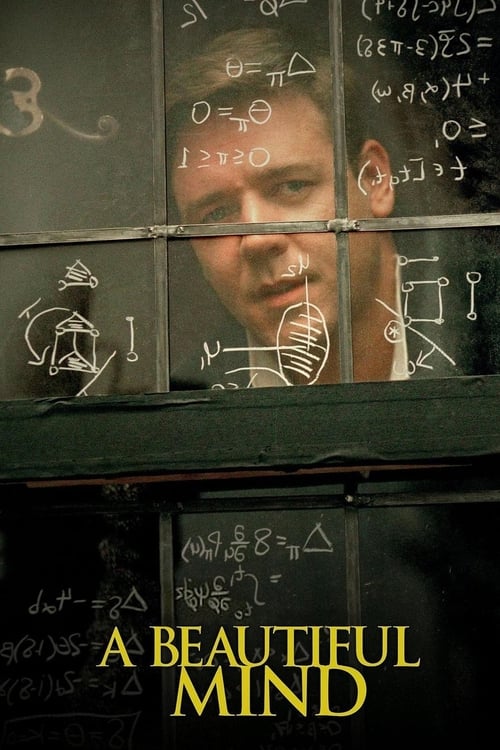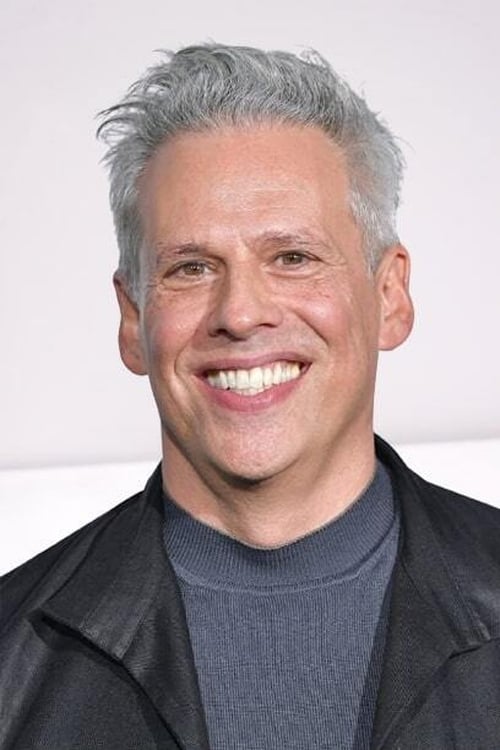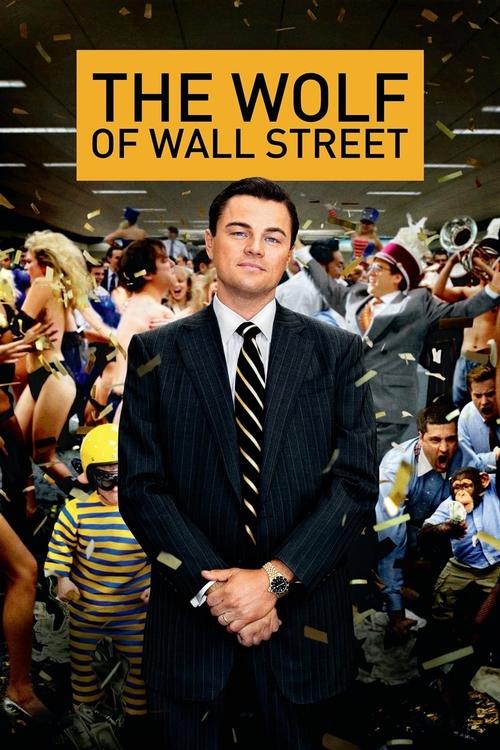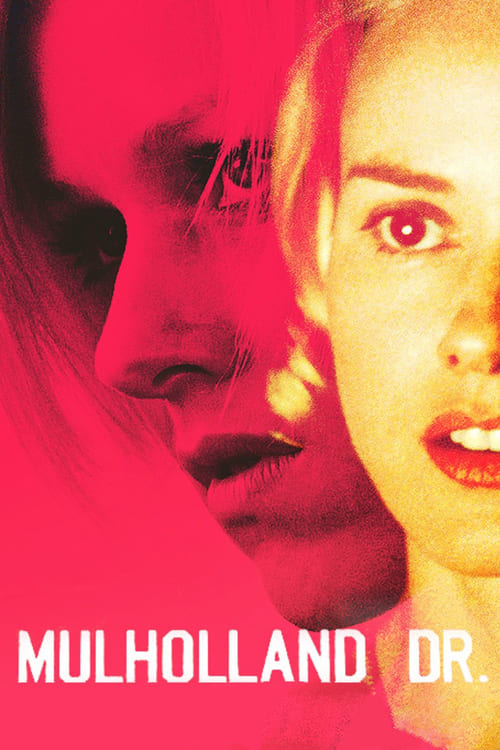
A Beautiful Mind
Brilliant mathematician, John Nash, is on the brink of international acclaim when he becomes entangled in a mysterious conspiracy.
Dialogues from Movie A Beautiful Mind
Quotes from Movie A Beautiful Mind
Memorable Scenes from Movie A Beautiful Mind
The Vision of Charles
As John Nash, played by Russell Crowe, begins his time at Princeton, he meets Charles Herman, his roommate. Initially, they share light-hearted moments, and John seems to be finding friendship. The pivotal moment occurs when John confesses his struggles with social interaction. The vibrant energy of Charles quickly shifts to a darker tone as John confronts the realities of his mind, revealing the complexity of his character. This scene foreshadows the challenges of dealing with his schizophrenia. After this moment, John's interactions become increasingly distorted, and the audience begins to question the boundaries between reality and illusion. The emotions evoked range from warmth to confusion and ultimately concern, illustrating the fragile nature of John's world. This scene highlights the theme of isolation versus connection.
Context: This moment establishes Nash’s character and introduces his invisible companion, setting the stage for his mental struggles, friendship, and the eventual unraveling of his perceptions.
The Classroom Reveal
In a lecture hall, Nash gives a brilliant explanation of game theory to his peers. His passion for mathematics shines through as he passionately explains the balance in decision-making. The scene pivots when he impresses everyone with an idea about competition and cooperation that subtly hints at his own isolation. The animated atmosphere turns serious when he later reflects on being misunderstood. The aftermath of this scene is profound; it marks a turning point where Nash becomes both celebrated and isolated in the world of academia. Viewers feel admiration mixed with sadness as they see Nash’s brilliance alongside his struggle. This scene speaks to the theme of genius and its burdens.
Context: Nash is at his pinnacle in academia, showcasing his intellect but foreshadowing the isolation that follows.
The First Major Crisis
As Nash walks the streets in a daze, we see him experiencing the first signs of his mental illness. This moment reaches its peak when he imagines being chased by government agents. It’s a visual intensity that captures Nash's spiraling mind perfectly through quick cuts and frantic movements. Following this scene, Nash’s world becomes increasingly fragmented. This moment causes viewers to feel tension and concern, as they realize his world is not what it seems. It connects to the film's themes of mental illness and the unpredictability of perception.
Context: This scene signifies the first visible signs of John’s mental illness, setting up the stakes for his character going forward.
The Hospital Confrontation
Nash's condition worsens, leading to his admission to a psychiatric hospital. The pivotal moment is when his wife, Alicia, confronts him about his hallucinations. This scene is filled with raw emotion as Nash fights to explain his reality while Alicia struggles with disbelief and betrayal. The aftermath sees their relationship tested to its limits. Viewers feel a heartbreaking blend of sympathy for Nash and frustration for Alicia, accentuating the theme of love under strain. This scene encapsulates the reality of mental illness affecting loved ones too.
Context: This scene is critical as it marks a turning point in Nash’s treatment and highlights the impact of his condition on Alicia.
The Moment of Clarity
In a scene where Nash is struggling to separate his hallucinatory friends from reality, he suddenly realizes that they aren't real. The pivotal moment comes when he chooses to ignore their presence, symbolizing his fight against his mind. After this realization, Nash begins the journey toward recovery. The emotional weight is immense, as viewers feel a surge of hope mixed with heartbreak for a man trying to make sense of his world. This scene speaks profoundly to the themes of perseverance and self-awareness.
Context: It marks a significant turning point in Nash’s journey, showcasing his inner strength while emphasizing the tragic nature of his illness.
The Nobel Prize Speech
As Nash prepares for his Nobel Prize acceptance speech, the tension builds. The pivotal moment arrives when he reflects not only on his achievements but also on his struggle with mental illness. The audience watches Nash, vulnerable yet triumphant. After delivering his speech, there's a blend of joy and relief that sweeps over as he is honored by his peers. This evoked feeling of pride and admiration resonates deeply, showcasing the theme of redemption. Here, Nash's success is bittersweet as it underscores his journey through pain.
Context: This moment symbolizes the culmination of years of turmoil and highlights Nash's brilliance and fortitude.
The Dance Scene
In a whimsical moment, Nash takes Alicia to an elegant ballroom dance. The scene crescendos into a beautifully choreographed moment filled with laughter and connection. The pivotal moment is when Nash, despite his struggles, allows himself to embrace joy, fully present in the moment. Following this, viewers feel a sense of warmth and genuine happiness, showcasing love that persists through hardship. This scene highlights the themes of love, connection, and the fleeting nature of happiness.
Context: This scene shows the strength of Nash and Alicia's relationship, even amid their struggles.
The Moment with His Son
In a deeply touching moment, Nash is seen with his son, recalling the bittersweet memories of fatherhood. The tension peaks when Nash shares a heartfelt story about the challenges of parenting while battling his own mind. The aftermath is profound; viewers witness a vulnerable side of Nash that reflects lost time and regret. The emotional response to this scene is powerful, as it emphasizes love, responsibility, and the fight for normalcy amidst chaos. This moment ties back to the overarching theme of familial relationships.
Context: This moment encapsulates Nash's struggles and illustrates the deep love he has for his son, despite his difficulties.
The Final Confrontation
In a climactic scene, Nash confronts his hallucinations one last time, reaffirming his choice to live in reality. The action is intense as he voices his determination and takes a stand against his mind. The aftermath is hopeful, as he finds a way to live with his condition, embracing both his genius and his weaknesses. Viewers feel inspired by Nash's courage, reinforcing themes of resilience and acceptance. This moment symbolizes Nash's ultimate struggle but also his victory over fear.
Context: A powerful resolution to Nash’s battle with his mental illness that showcases his growth and strength.
The Breakthrough with Alicia
Nash has a heart-to-heart with Alicia during a quiet moment at home. The pivotal point comes when he expresses his fears and insecurities to her. Her unwavering support signifies the strength of their bond. Post-conversation, the air is heavy with emotional weight, evoking feelings of love, support, and understanding. This heartwarming encounter reflects themes of partnership and commitment through adversity.
Context: This scene pinpoints the importance of trust and vulnerability in relationships, showcasing Alicia’s unwavering love.
The Reunion after Years
Years later, Nash meets his old friend Charles in a haunting yet tender moment, symbolizing nostalgia and loss. The pivotal moment reveals John's acceptance of his condition, no longer giving Charles the power over him. The emotional aftermath resonates with viewers as they sense closure and growth. This scene illustrates the theme of coming to terms with oneself, as Nash embraces reality.
Context: A significant moment in reflecting on how far Nash has come and what he has endured along the way.
The Baker Scene
When Nash watches a baker, the simplicity of the moment becomes powerful as he reminisces about ordinary life. Tension peaks when he realizes the beauty of reality in small things. Post this scene, viewers can feel a sense of peace wash over him, as he learns to find solace in the everyday. The emotional reaction is one of serenity and a deeper understanding of life's value, emphasizing themes of mindfulness and presence.
Context: It showcases how Nash found joy in the mundane and acknowledges moments of beauty in life.
The Park Bench Conversation
Nash and Alicia sit on a park bench discussing their future, where they delve into their dreams and hopes. The pivotal moment comes when Nash acknowledges past regrets but looks forward with optimism. Afterward, there's a deep sense of longing for happiness, yet hope for brighter days. This moment resonates strongly, reflecting themes of hope with a tinge of sorrow.
Context: This exchange highlights the fragile balance between dreams and reality, emphasizing their resilient relationship.
The Timeless Promise
A poignant scene when Nash promises to take care of Alicia, expressing his intent to battle the illness together. The tension peaks here as he shows vulnerability and strength simultaneously. The aftermath carries weight; Alicia grips his hand tightly, representing unity against adversity. The emotional reactions from viewers range from hope to tears, resonating deeply with themes of devotion and partnership.
Context: This promise solidifies their bond, emphasizing the unwavering commitment despite the challenges ahead.
The Last Hallucination
As Nash prepares to confront his final hallucination, he sits alone in silence, reflecting on his journey. The pivotal moment comes when Nash declares that he no longer needs to engage with his past. The aftermath is liberating, as he steps out into the world, allowing reality to guide him. Viewers feel a wave of cathartic relief for Nash as he finds peace. This scene encapsulates the essence of acceptance and growth, focusing on themes of mental health.
Context: A powerful conclusion to Nash's battle with his mind, marking his strength and clarity.
The End of Isolation
Nash finds a group of supportive friends and begins to emerge from his shell. The pivotal moment appears as they share stories and laughter, showcasing their acceptance and understanding of each other. After this experience, there's a palpable sense of camaraderie, evoking feelings of belonging and relief. This scene is impactful, spotlighting themes of community and self-acceptance.
Context: It signifies Nash’s gradual journey toward reclaiming happiness and reconciling with his past.
The Final Meeting with the Nobel Committee
Nash stands before the Nobel Committee, reflecting on his journey while still grappling with his illness. The turning point comes when he begins to speak passionately about love and mathematics. Afterward, there's a joyous acceptance, and Nash realizes he is valued for more than just his genius. Viewers feel elation mixed with recognition of struggles, reinforcing themes of redemption and hope.
Context: A moment that encapsulates Nash's complex journey while culminating in recognition of his brilliance.
John's Solitude
A quiet scene where Nash is seen sitting alone, deep in thought. It captures his loneliness and the weight of his mind’s burdens. Tension peaks as he acknowledges his isolation. The aftermath hits hard as viewers feel empathy for his struggles, linking with themes of solitude and longing for connection.
Context: It gives insight into the emotional struggle of Nash, making his triumphs later even more impactful.
The Birthday Celebration
Nash's family gathers to celebrate a birthday, filled with laughter and joy. The pivotal moment occurs when Nash realizes the true meaning of togetherness, igniting a sense of hope within him. After this moment, warmth spreads through the atmosphere, portraying the significance of family. This scene resonates with viewers, emphasizing themes of unity and love.
Context: It highlights the strength of familial support while balancing the weight of Nash's struggles.
The Confrontation with Reality
In a powerful moment, Nash confronts the realization that his hallucinations are just that—illusions. The tension peaks as he battles his mind's hold on him. The aftermath is a mix of struggle and acceptance, evoking a profound realization within viewers. This moment reaches out hard, anchoring themes of truth and the fight for mental clarity.
Context: It's a transformative point where Nash begins to confront his inner demons directly.
The Last Embrace
In an emotional finale, Nash and Alicia share a long embrace, filled with love and understanding. The pivotal moment encapsulates their unwavering support for each other. As they pull apart, there is a sense of resilience radiating between them. Viewers are left feeling a mix of bittersweet joy and sorrow, emphasizing the depth of their bond. This moment connects beautifully with themes of unconditional love and perseverance.
Context: The scene resonates deeply, closing the narrative arc around love and mental illness.
Download App
Behind the Scenes from Movie A Beautiful Mind
Russell Crowe's Transformation
Russell Crowe gained 30 pounds for his role as John Nash to portray the character's decline into schizophrenia more realistically.
Why it matters: This physical transformation added authenticity to Crowe's performance, allowing audiences to witness the stark changes in Nash's mental state, enhancing the emotional impact of the film.
Imaginary Friends
The film deliberately blurred the line between reality and hallucination by having Nash's imaginary friend Parcher, played by Ed Harris, appear in scenes without an obvious cue.
Why it matters: This technique mirrors Nash's experience with schizophrenia, allowing the audience to feel the disorientation and confusion of living with the disorder, creating a more immersive viewing experience.
The Use of Minimalist Soundtrack
Composer James Horner used simple piano motifs throughout the film to underscore Nash's emotional journey.
Why it matters: The understated soundtrack emphasizes the psychological depth of Nash's character, allowing the music to enhance, rather than overpower, key moments of realization and despair.
Real Life Interaction
The filmmakers closely consulted with John Nash's family, particularly his wife Alicia, to accurately portray their relationship.
Why it matters: This collaboration added emotional depth and authenticity to the love story, presenting a nuanced view of mental illness and the impact on personal relationships.
Cognitive Science Consultation
The production team worked with cognitive scientists to portray schizophrenia accurately, ensuring the film's representation was grounded in real psychological principles.
Why it matters: This dedication to authenticity provided viewers with a more insightful perspective on schizophrenia, challenging misconceptions about mental health in a powerful way.
Nash's Nobel Prize Scene
The actual Nobel Prize scene was filmed in a real venue, and Crowe's reaction to winning was inspired by Nash's own acceptance speech.
Why it matters: This decision contributed to the emotional realism of the scene, allowing audiences to feel the gravity of Nash's achievement, grounded in real-life events.
Visual Representation of Hallucinations
The filmmakers used practical effects and lighting changes to represent Nash's hallucinations, rather than relying on CGI.
Why it matters: This choice grounded the film in reality, making the hallucinations feel more believable and relatable, enhancing the audience's understanding of Nash's perspective.
Veracity of Mathematical Computations
Mathematicians consulted on the film ensured the computations and theories presented were accurate, giving a true sense of Nash's genius.
Why it matters: By accurately portraying mathematical concepts, the film respects Nash's intellect and adds credibility to his character, making his story more inspiring.
Throwback to the 1940s Styles
Costume designer Judy L. Becker scoured vintage clothing stores to find authentic 1940s styles for the cast to wear.
Why it matters: The attention to period detail helped immerse the audience in the time period, enhancing the film's authenticity in its depiction of Nash's life.
Glitches in Scenes
Several scenes feature deliberate 'glitches,' such as stuttering camera shots or abrupt changes in framing, to represent Nash's psychological instability.
Why it matters: This cinematic technique allows viewers to feel Nash's disjointed reality, deepening their emotional engagement with his struggles.
Casting of Paul Bettany
Paul Bettany, who played Nash's best friend Charles, was cast after director Ron Howard was impressed by his audition for another film.
Why it matters: Bettany's performance became a defining aspect of the film, as it provided Nash's character with a palpable connection to his past, heightening the emotional stakes of his journey.
Emotional Reunion Scene
Crowe and Jennifer Connelly's reunion scene was filmed in a single take, capturing the raw emotion between their characters.
Why it matters: This choice gave the moment a sense of realism and intimacy, allowing the audience to connect deeply with their relationship's complexities.
Connelly's Preparation
Jennifer Connelly extensively researched mental illness and spoke to families affected by it to authentically portray Alicia Nash.
Why it matters: Her commitment to understanding the emotional toll on caregivers enriches her performance, making it relatable and poignant for viewers.
Discovery of Hallucinations
Scenes depicting the gradual revelation of Nash’s hallucinations were shot out of chronological order to maintain suspense.
Why it matters: This strategy mirrored Nash's experience, allowing audiences to slowly uncover the truth alongside him, heightening the dramatic tension.
Visual Storytelling
The film employs visual metaphors throughout, such as the recurring motif of the number 1, representing Nash's theories.
Why it matters: These visuals serve as a subtle reminder of Nash's genius, enriching the narrative with layers of meaning that reward attentive viewers.
Crowe's Personal Investment
Russell Crowe became deeply invested in John Nash's story, even visiting Nash personally before filming began.
Why it matters: This personal connection translated into an authentic portrayal, allowing Crowe to deliver a nuanced performance that resonated emotionally with audiences.
Filming in Real Locations
Much of the film was shot on location at Princeton University, which added authenticity to the setting.
Why it matters: Using real settings allowed the film to capture the atmosphere of Nash’s life authentically, enhancing the audience's immersion in his world.
Editing Influences
Editor Mike Hill and Ron Howard worked closely together to create tension by manipulating pacing, particularly during key emotional climaxes.
Why it matters: This collaborative effort in editing heightened the film's emotional impact, drawing audiences into the psychological turmoil that Nash experiences.
Alicia Nash's Family Involvement
Alicia Nash was involved during production, providing insight into her husband’s life and relationship.
Why it matters: Her contributions ensured a respectful and accurate portrayal, fostering a deeper understanding of the personal effects of mental illness.
Reception of Critics and Audiences
Upon its release, 'A Beautiful Mind' was praised for its sensitive portrayal of mental illness, changing how Hollywood depicted such narratives.
Why it matters: This impact encouraged future filmmakers to approach mental health stories with care and depth, influencing a range of subsequent films.
Special Effects Team's Contribution
The visual effects team created practical visualizations of Nash's hallucinations, emphasizing practical effects over CGI.
Why it matters: Employing these methods created a raw representation of Nash's experiences, resonating deeply with viewers and enhancing emotional authenticity.
Symbolic Ending
The film's ending features scenes of John Nash at the Nobel Prize ceremony, symbolizing victory over his struggles.
Why it matters: This conclusion serves as a powerful testament to resilience and redemption, leaving audiences with a sense of hope and inspiration.
Download App









